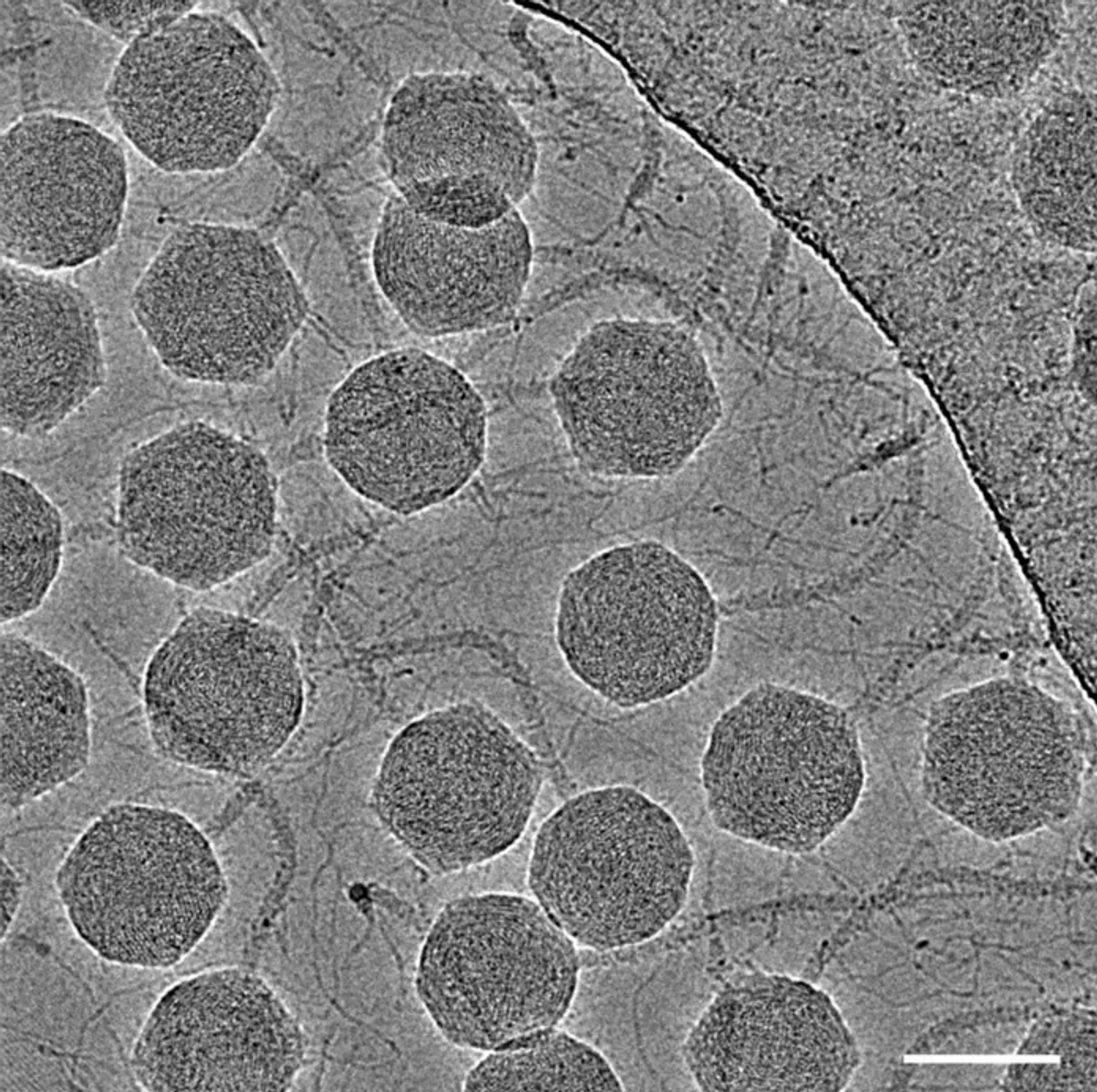A New Understanding of Bacteriophages May Pave the Way for Their Use
Two new studies have advanced our understanding of bacteriophages or phages, which are viruses that infect bacterial cells. Bacteriophages are crucial organisms that can be found in the gut microbiome, and throughout our world. They help keep bacterial populations in check, and could potentially be used to destroy antibiotic-resistant bacterial infections that are affecting crops, agricultural animals, or even people. But if we're going to use these phages in industry or therapeutically, we must fully understand how they work first.
In one new study reported in Nature Communications, researchers have solved the three-dimensional structure of a bacteriophage called a tequintavirus, or T5-like bacteriophage. The research showed that T5like bacteriphages do not have a viral envelope, they are shaped like icosahedrons, and their flexible tail is the main channel the phage uses to inject its DNA into bacterial cells.
"The structural knowledge we have obtained can enable the engineering of bacteriophages with improved ability to kill these bacterial pathogens," noted study co-author Professor Matthias Wolf, the head of the Molecular Cryo-Electron Microscopy Unit at the Okinawa Institute of Science and Technology (OIST).
Bacteriophages might also be useful as a delivery system for gene therapy. Non-pathogenic viruses that infect cells are already used as vectors that can get gene therapy reagents into cells, but they can sometimes cause problems. Phages may be a better choice.
"Phage therapy is an active area of research, and it is very likely that we are going to see these treatments in our lifetime," said lead study author Dr. Rafael Ayala, also of OIST.
In an unrelated study reported in the journal Bioinformatics, scientists have outlined a new, open-access tool for studying phages called Phables. This software is able to outline the genetic content of phages using environmental sequencing data, which has previously been very challenging. There has been a lack of comprehensive coverage of the sequences of phage DNA when thay are captured in environmental DNA samples, which severely hampers investigators' ability to understand how they function. The study authors noted that with Phables, the sequences of phages collected in environmental DNA can be up to 49 percent more complete when this tool is applied.
Phables can now "facilitate the discovery of novel phages and enable their laboratory isolation, which will lead to advancements in medical treatments, environmental management, and a deeper understanding of microbial life," said study co-author Professor Robert Edwards, Director of the Flinders Accelerator for Microbiome Exploration (FAME) Lab at Flinders University.
Sources: Okinawa Institute of Science and Technology, Flinders University, Nature Communications, Bioinformatics









